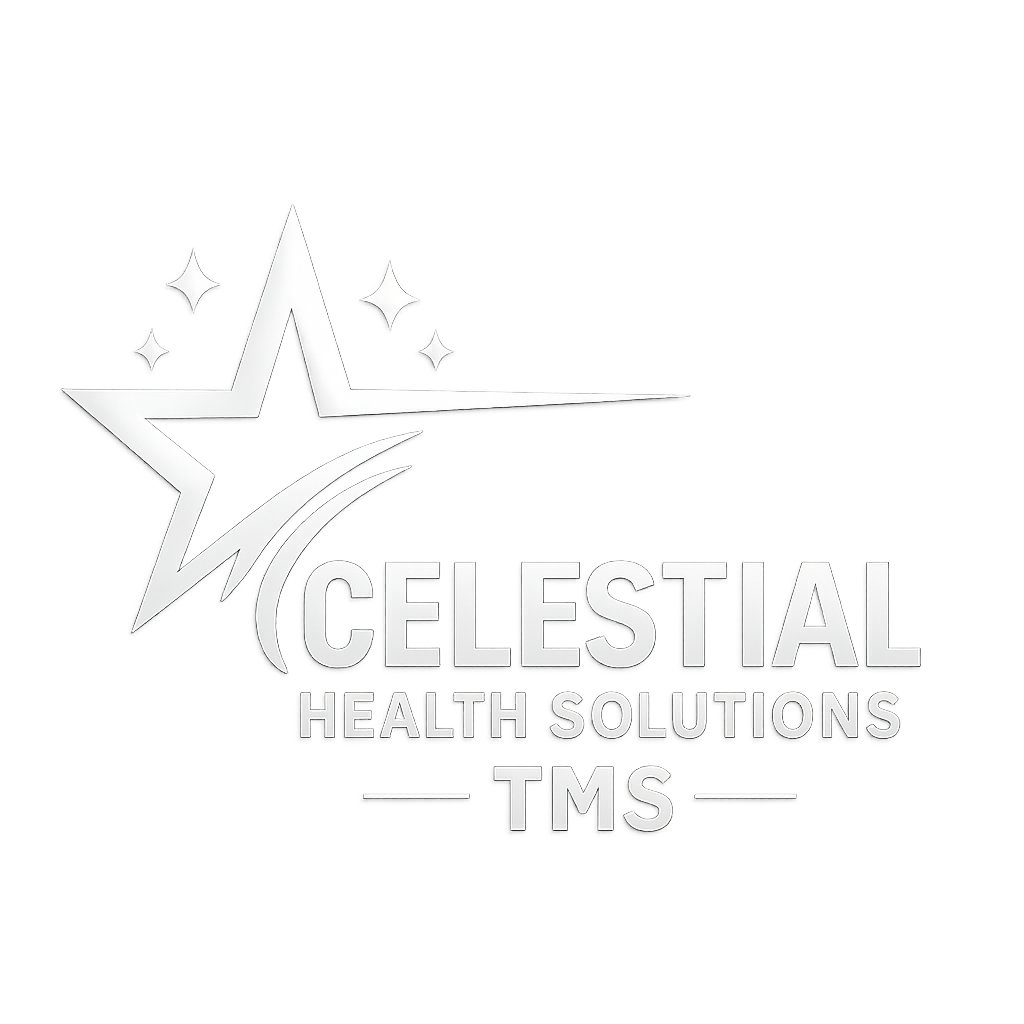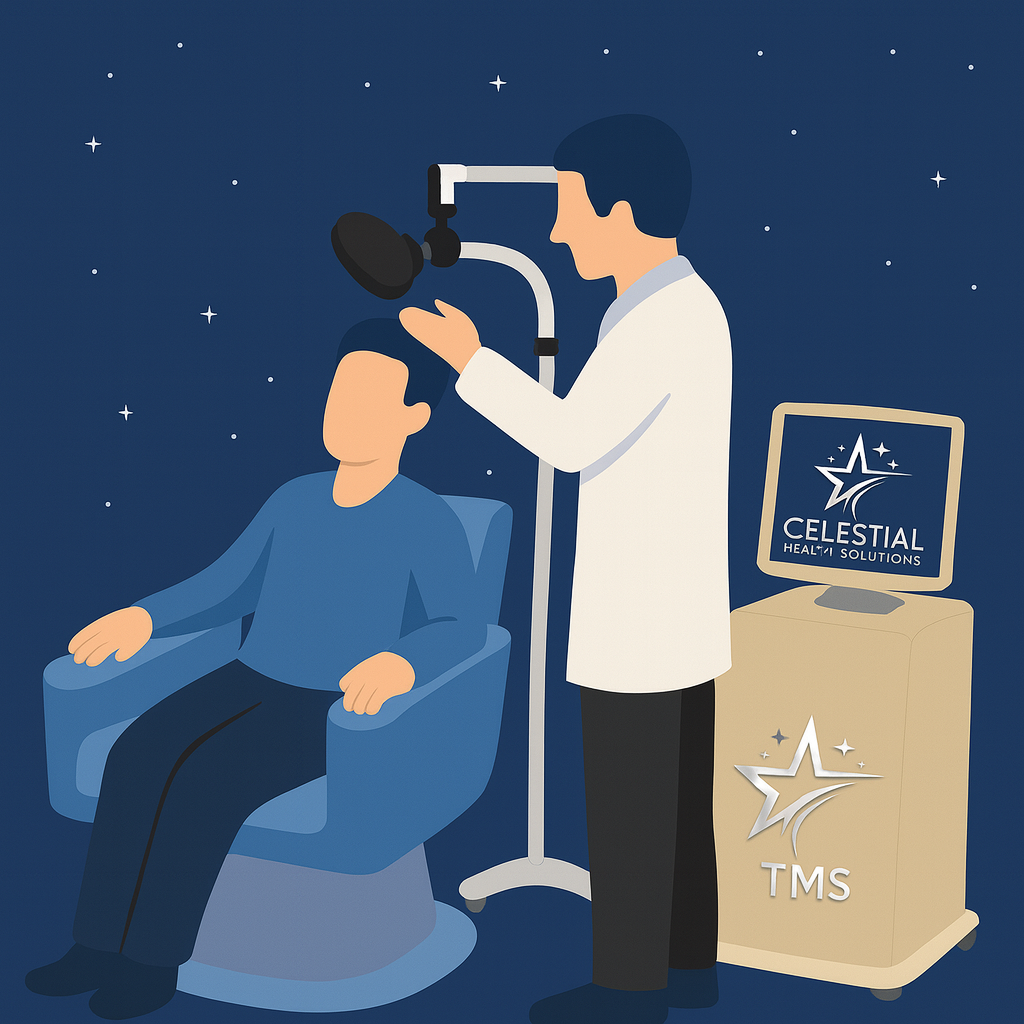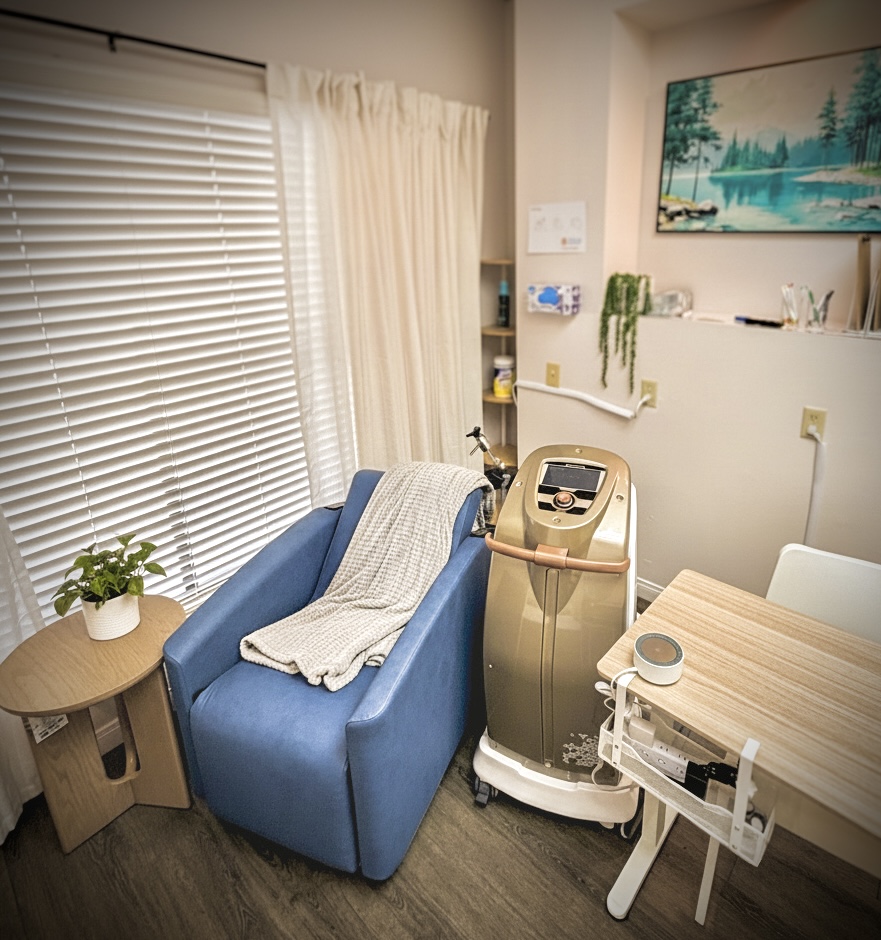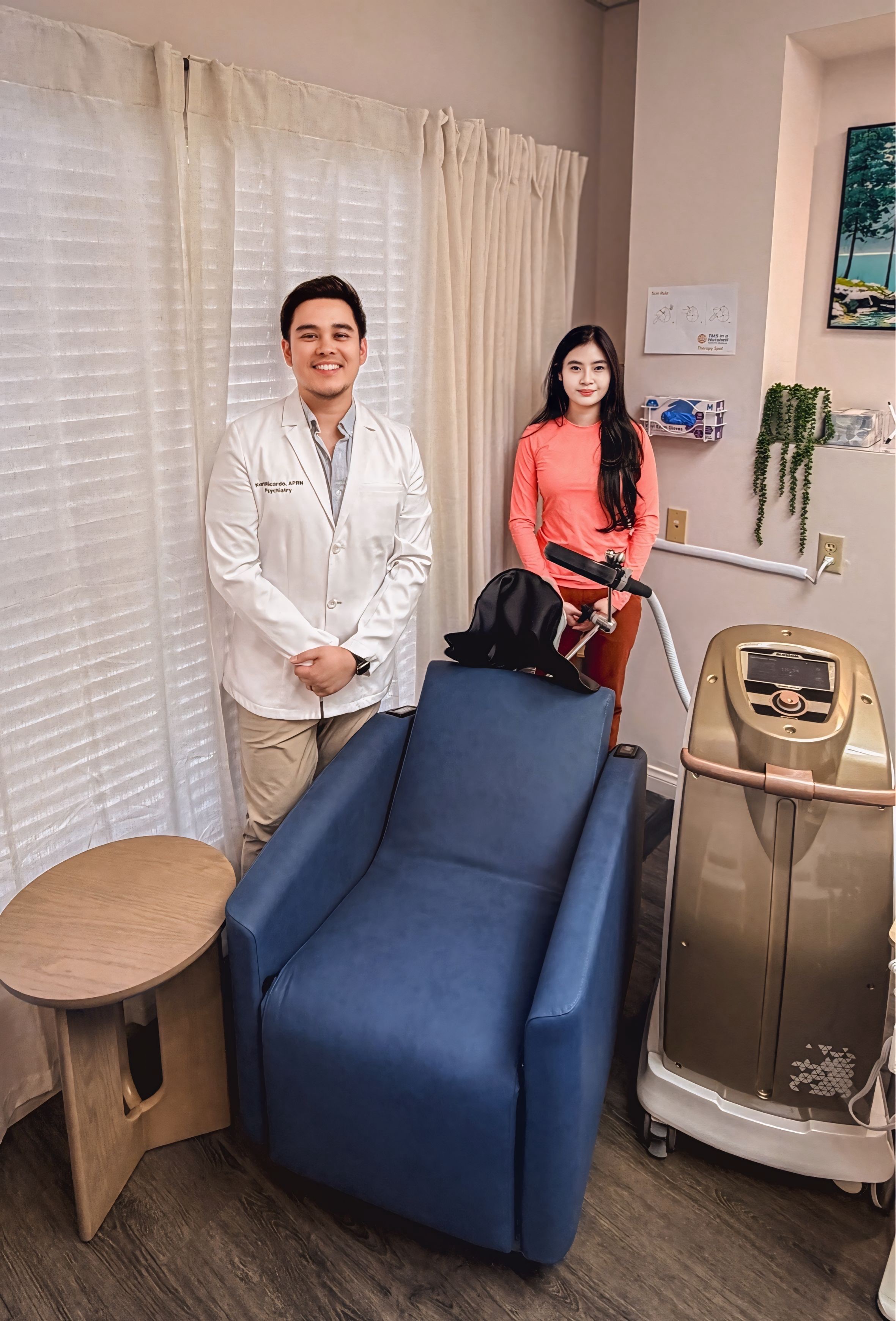
An FDA-approved alternative treatment (does NOT involve medications) for DEPRESSION
TRANSCRANIAL MAGNETIC STIMULATION (TMS)
Feel Better with TMS
It’s a Simple, Safe, Proven, Non-invasive Treatment

What is TMS?
Transcranial Magnetic Stimulation (TMS) is a non-surgical treatment that uses short magnetic pulses to gently stimulate brain areas involved in mood and relieve the symptoms of depression. It helps brain circuits that aren’t working well start communicating better to help alleviate depression.
How it works
A small device sits on your head and sends quick magnetic pulses through the scalp. Those pulses nudge nerve cells in the front part of the brain (the area that helps control mood), helping those cells “wake up” and work more normally. It’s like giving the brain a gentle workout — no needles, no surgery.
What a session feels like
- You sit in a comfortable chair and the technician places the device on your head.
- You will hear clicking sounds and feel a tapping sensation on your scalp.
- Sessions are done while you’re awake and usually last only about 20 minutes
Typical treatment plan
Most people do TMS 5 days a week for 5–7 weeks (about 30-35 sessions).

How well does it work?
Many people who haven’t improved with medication or therapy do get better with TMS. Studies show a meaningful portion of patients respond to treatment and some reach remission (no longer meeting criteria for depression). Exact rates vary by study and by how treatment-resistant the depression is.
Success Rates You Should Know
| Outcome | Typical Rate among people doing a full course of TMS |
| “Response” (meaning symptoms improve a lot, usually ~50% reduction in depression) | 50%-60% |
| “Remission” (meaning symptoms go away or nearly go away) | 30%-40% |
Common side effects (what to expect)
- Mild headache or scalp soreness — the most common side effect, usually short-lived.
- Rarely, people may feel lightheaded, have facial muscle twitching, or very rarely experience a seizure.
- Your care team screens for things that raise risk (like certain implants or epilepsy).
Who can try TMS?
TMS is FDA-cleared for adults with major depressive disorder who haven’t gotten enough relief from medicines or therapy; some devices and protocols have additional clearances (including certain adolescents). Your doctor will review your medical history to see if TMS is safe and appropriate for you.
Why someone might choose TMS
- It’s noninvasive (no surgery, no anesthesia).
- You can go back to normal activities right after a session.
- It may help when medications haven’t worked well and with faster improvements than medication trials.
Quick FAQ
- Q: Will it change my personality?
- A: No — TMS targets specific brain areas to help mood and function; people usually report feeling more like themselves.
- Q: Is it painful?
- A: Most people call it a tapping or clicking feeling. There can be mild discomfort at first, but it’s usually manageable.
- Q: How soon will I feel better?
- A: Some people notice changes after 2–3 weeks; others improve toward the end of the treatment course.
- Q: How much does treatment cost?
- A: TMS is fully covered by many insurances, contact us for more details. Self-pay is also available for uninsured clients.
Ready to learn more or book a consultation?
Contact our clinic via message, call, or email. We’ll answer your questions, review your medical history, and explain whether TMS might be a good option for you.
Ready to get started and see if TMS is right for you?
Click Here
Get in touch
Have a question or ready to book? Send us a message and our care team will follow up promptly.
2255 E. Renaissance Dr. Ste B
Las Vegas NV 89119